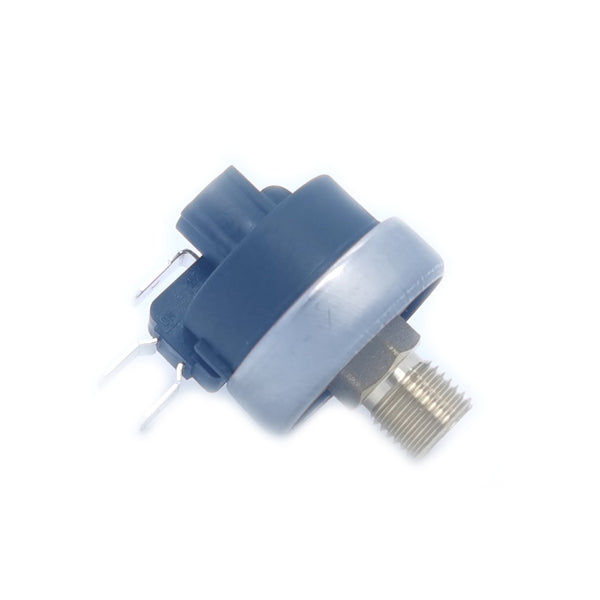Imagine a world without air compressors—no power tools buzzing, no inflatable pool toys, and certainly no satisfying "hiss" as your car tires fill with air. Behind the scenes, an unsung hero makes it all happen: the air compressor pressure switch. We'll examine the inside workings of this vital part in this post and understand its function in conserving the pressure that powers our devices and equipment.
Introduction
Air compressors are the unsung heroes of our daily lives. From inflating your bicycle tires to powering pneumatic tools, they make life a breeze—pun intended. Ever wondered about the wizard behind the curtain? Enter the air compressor pressure switch, a small yet mighty device that ensures your compressor kicks in when needed and takes a break when it's had its fill.
The Basics
Before we dive into the intricate details, let's establish a foundation. An air compressor pressure switch is, in essence, the traffic cop of your air compressor. It monitors the air pressure in the tank, directing the compressor to start or stop based on predefined thresholds. Easy and suitable, yes? Fortunately, beneath the surface is more.
Pressure Switch
Picture this: the pressure switch is like the conductor of an orchestra, coordinating the various components to produce a harmonious result. It's a small box with wires and hoses, silently ensuring your compressor operates seamlessly without your intervention.
Air Compressor Basics
To truly appreciate the pressure switch, let's briefly explore how an air compressor operates. It draws in air, compresses it, and stores it in a tank for later use. The pressure switch is crucial for preserving a state of equilibrium, minimizing overpressurization, and guaranteeing a continuous flow of compressed air.
How does it sense pressure?
The pressure switch isn't a mind reader, but it comes close. Through a clever mechanism, it senses the air pressure in the tank. It's akin to what your body feels when it's thirsty—instinctive and crucial for maintaining equilibrium.
The On and Off Dance
Imagine a dance where the pressure switch is the choreographer. When the air pressure drops below a certain level, it signals the compressor to start, filling the tank. Once the pressure reaches the upper limit, it gracefully directs the compressor to take a bow and rest until the next performance.
Adjusting the Settings
Not all performances are the same, and neither are the tasks you throw at your air compressor. Fortunately, pressure switches come with adjustable settings. Need higher pressure for heavy-duty tasks? Adjust the settings with the ease of tuning a guitar string.
Analogies and Metaphors
Let's put it in terms we all understand. The pressure switch is like the thermostat in your home, maintaining a comfortable temperature without you lifting a finger. It's the maestro orchestrating a symphony of compressed air, ensuring your projects hit all the right notes.
Troubleshooting
Even the best orchestras have off days, and pressure switches are no exception. We'll explore common issues like leaks and faulty readings and what you can do to troubleshoot them. After all, every maestro needs a backup plan.

FAQs
How often should I check and replace my air compressor pressure switch?
Regular checks are crucial—every six months is a good rule of thumb. If you notice erratic behavior or your compressor isn't performing as expected, it might be time for a replacement.
Can I adjust the pressure switch settings myself?
Of course! A large number of pressure switches have simple-to-follow directions. Just keep aware that little changes might have an important effect, so continue with caution.
Why does my pressure switch seem to click rapidly at times?
That's the switch doing its job, rapidly turning the compressor on and off to maintain the desired pressure. If it's excessive, it could signal an issue worth investigating.
What's the lifespan of an average pressure switch?
With proper maintenance, a pressure switch can last several years. However, factors like usage frequency and environmental conditions can influence its lifespan.
Is it normal for the pressure switch to get warm during operation?
Yes, it's normal for the pressure switch to warm up a bit. However, if it becomes excessively hot, it might be a sign of an underlying issue, and it's advisable to have it checked.
Extra about air compressor pressure switch
In unraveling the mysteries of the air compressor pressure switch, we've invented a device that plays a crucial role in our daily lives and we can learn more facts about that device from the XIDIBEI website. Whether you're a DIY enthusiast or rely on compressed air for work, understanding how this unassuming switch works can make your tasks smoother and more efficient. So, the next time you power up your air compressor, remember the silent conductor working behind the scenes, ensuring your projects hit all the right notes. If you want to learn more about this, then you can learn that from XIDIBEI.
Conclusion
In the grand performance of our daily lives, the air compressor pressure switch is the unsung hero, orchestrating the seamless flow of compressed air. From its humble beginnings as a simple device to its evolution into a sophisticated conductor, it keeps our gadgets humming and our tools buzzing. The next time you hear that familiar "hiss," give a nod to the pressure switch—it's working behind the scenes to make it all happen.



Leave a comment